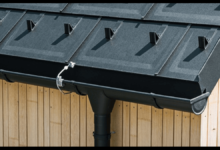Dompelpomp: The Ultimate Guide to Submersible Pumps

Introduction
A dompelpomp, or submersible pump, is an essential tool for efficiently removing water from various environments. Whether you’re dealing with a flooded basement, maintaining a garden pond, or managing water on a construction site, understanding the functionality and applications of a dompelpomp can be incredibly beneficial.
What is a Dompelpomp?
A dompelpomp is a type of pump designed to operate while fully submerged in the fluid it is meant to pump. This design allows for efficient water removal without the need for priming, as the pump is already in the water.
How Does It Work?
The pump operates by converting electrical energy into mechanical energy through a motor, which drives an impeller. The impeller creates a centrifugal force that pushes water through the pump and out through a discharge pipe. Since the pump is submerged, it benefits from the surrounding water pressure, aiding in the pumping process.
Components of a Dompelpomp
- Motor: The heart of the pump, typically sealed to prevent water ingress.
- Impeller: Rotates to move water through the pump.
- Casing: Protects internal components and directs water flow.
- Discharge Pipe: Channels the pumped water away from the source.
- Float Switch: Automatically turns the pump on or off based on water level.
Types of Dompelpompen
Dompelpompen come in various types, each suited for specific applications.
Clean Water Dompelpompen
Designed for pumping clear water without debris, these are ideal for draining swimming pools, water tanks, or flooded basements. They typically have smaller inlets and are not suitable for water containing solids.
Dirty Water Dompelpompen
These pumps can handle water with a higher concentration of solids, such as sand, mud, or leaves. They’re commonly used on construction sites or for draining ponds. Equipped with larger inlets and robust impellers, they can handle particles up to a certain size.
Sewage
Specifically designed to handle wastewater containing organic matter and solids, these pumps are used in sewage systems and septic tanks. They often feature grinders to break down solids before pumping.
Applications of Dompelpompen
The versatility of dompelpompen makes them suitable for a wide range of applications.
Residential Use
- Flooded Basements: Quickly remove water to prevent damage.
- Garden Irrigation: Pump water from rain barrels or wells.
- Swimming Pools: Drain water for maintenance or cleaning.
Commercial and Industrial Use
- Construction Sites: Remove water from trenches or foundations.
- Agriculture: Irrigate fields or manage water in livestock areas.
- Municipal Systems: Manage stormwater or sewage.
Choosing the Right Dompelpomp
Selecting the appropriate dompelpomp depends on several factors:
Water Type
- Clean Water: Use a pump designed for clear liquids.
- Dirty Water: Opt for a pump that can handle solids.
- Sewage: Choose a pump with a grinder mechanism.
Flow Rate and Head Height
- Flow Rate: Measured in liters per hour (l/h), indicates how much water the pump can move.
- Head Height: The vertical distance the pump can move water, crucial for applications involving elevation changes.
Power Source
- Electric: Common for residential use, requiring access to electricity.
- Battery-Powered: Portable and useful in areas without power.
- Gasoline/Diesel: Suitable for heavy-duty, remote applications.
Installation and Maintenance
Proper installation and regular maintenance ensure the longevity and efficiency of your dompelpomp.
Installation Tips
- Placement: Ensure the pump is placed on a stable surface to prevent tipping.
- Submersion: The pump must be fully submerged to operate correctly.
- Discharge Hose: Securely connect to direct water away from the area.
Maintenance Practices
- Regular Cleaning: Remove debris from the inlet and impeller.
- Inspect Seals: Check for wear and replace if necessary to prevent leaks.
- Test Operation: Periodically run the pump to ensure functionality.
Safety Considerations
Safety is paramount when operating a dompelpomp.
- Electrical Safety: Ensure all connections are waterproof and use a Ground Fault Circuit Interrupter (GFCI).
- Avoid Dry Running: Never operate the pump without water, as this can damage the motor.
- Proper Ventilation: For pumps with combustion engines, ensure adequate ventilation to prevent carbon monoxide buildup.
Conclusion
A dompelpomp is a versatile and efficient tool for managing water in various settings. By understanding the different types, applications, and maintenance requirements, you can select the right pump for your needs and ensure its optimal performance.

